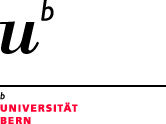To enable an exam question to contribute to the quality of the exam, finding the correct answer should depend, as exclusively as possible, on whether the respondent possesses the knowledge that the question is aiming to test. To achieve this, the answer options should fulfill a whole series of content-based, formal, and linguistic criteria.
The AAE supports persons in charge of exams and question authors in formulating good exam questions. They bring the subject-based knowledge, and we take care of the formal-linguistic revision.
Content criteria (selection)
- All answer options should fall into the same category; thus, they should be homogenous regarding content (symptoms, therapies, diagnoses etc.).
- There should be clear reasons for distractors. For instance, the concern might be with frequent misconceptions, incorrect concepts, or outdated views. At the very least, however, there should be a clear, traceable relationship to the theme of the question.
- The distractors of single choice questions do not all have to be completely incorrect, but the correct answer does have to be clearly the best one. The closer the answer and the distractors are in terms of content and correctness, the more difficult is the question.
- Each answer option should be as short as possible and contain only one statement.
Formal criteria (selection)
With regard to formal criteria, the concern is primarily with avoiding unintentional formal and linguistic solution hints (cues). Such hints allow candidates with experience of MC to identify the correct answer without subject-specific knowledge.
- All answers need to correspond to the stem in grammatical terms.
- Distractors should be as similar to the correct answer as possible in terms of length and differentiation.
- Hints which limit the attention to a small number of answers are to be avoided.
